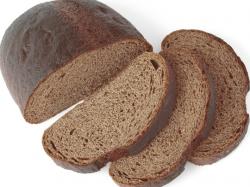In Search Of The Best Rye Bread In America
April 6, 2011 | 2 min to read

What's the matter with New York delicatessens? The smoked meats they serve are succulent, the chopped liver luxurious, the knoblewurst gnarly, but for the anemic rye they use to make sandwiches, a knuckle rapping is in order.
We marched to the cash register of the esteemed 2nd Ave Deli after enjoying fine, spice-rimmed pastrami on slices of what could have been Wonder bread with a tan, and expressed our extreme disappointment to the poor cashier. "I know, I know," she shrugged. "Good rye is hard to find." If you've eaten sandwiches in other famous Jewish-style delis in New York, you believe her. Katz's and the Carnegie Deli, grand as they may be in other respects, also embarrass good meat with lightweight bread, in which crust and crumb are nearly indistinguishable and caraway seeds are curiously devoid of flavor.
After consuming too many lackluster ryes, we began to wonder if we were expecting the impossible. Was our vision of the ideal deli sandwich merely euphoric recall of magnificent bread that never was? We looked at old 35mm slides of corned beef and pastrami sandwiches we'd eaten in the early 1970s, and although the pictures' colors had faded, there was no denying the luster of the bread's crust, the density of each slice, the surfeit of seeds that were plump instead of desiccated. Just to clarify, the Jewish deli rye that good meats deserve isn't the dark, heavy, all-rye-flour loaf that's indigenous to, and still prevalent in, parts of Eastern Europe (see "Regional Rye Breads,"); it's an American hybrid that contains white wheat flour, too, and has a fine crumb that makes it suitable for slicing and forming into sandwiches. That shiny surface is owed to an egg-wash glaze; its tang usually comes from a sourdough starter; and its bottom is covered with cornmeal (hence the common nickname corn rye).
To read the rest of the story, please go to: Saveur
